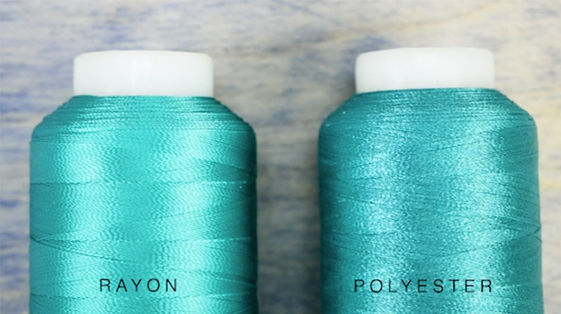What is the difference between rayon and polyester fabric?
There are a lot of fabrics used in the textile industry where rayon and polyester are among them. Both are made from natural raw material and this the reason behind their similarities.
The article provides a detailed insight into the difference between rayon and polyester to help eliminate the confusion emanating from these synthetic fibers.

What Is a Rayon Fabric?
Rayon is a material obtained from artificial silk which was processed from natural materials like trees and pulp.
The material is regarded to be semi-synthetic fiber. Hence it is neither natural nor synthetic in nature.
The good thing with rayon is that it is soft, comfortable, breathable, and moisture-absorbent. It is a perfect material for summer wear.
The big issue with the material is that it is highly prone to wrinkle and tear. The properties and method of extraction determine the type of rayon.
Some common example of rayon in the market is Cuprammonium rayon, high tenacity modulus rayon, regular rayon, and high wet modulus rayon.
The most wonderful thing with rayon is that it can be mixed with different fibers to reduce the cost, luster, softness, and absorbency.
What Is a Polyester Fabric?
Polyester is a fabric strong and durable. It is made from synthetic fiber and comparatively resistant to wrinkles and tear.
However, it is not a good fabric for designing clothes for summer since they tend to stick on the skin when an individual begins to perspire.
The good news is that it can be used to design clothes for winter to help people keep warm. The fabric is elastic which gives it the ability to be resistant to wear and tear.
Garments made from polyester can be washed frequently and even treated by the use of harsh detergents.
Besides that, polyester is cheap when compared to other fabrics made from natural materials like cotton and linen.
Lastly, polyester can easily be mixed with cotton to result in polycotton which has a lot of advantages when compared to other fibers.
Comparison Chart: Rayon Vs Polyester
| Basic Terms | Rayon | Polyester |
| Type of Fiber | Semi-synthetic fiber | Synthetic fiber |
| Climate | Worn in warm climates | Worn in cold climates |
| Shrinking, Wearing, and Tearing | The tendency to shrink, wrinkle and tear | Resistant to wrinkles, tears, and shrinkage |
| Drape | Drapes well | Does not drape |
| Wash | Shrinks and stretches | Easily be washed and worn |
| Smoothness | Very smooth | Not very smooth |
| Number of Types | Four types such as Regular rayon, High tenacity modulus rayon, High wet modulus rayon, and Cuprammonium rayon. | Two types such as Polyethylene terephthalate (PET) and Poly-1, 4-cyclohexylene-dimethylene terephthalate (PCDT). |
| Uses | Ideal for clothing high-heat situations like factories | Ideal for outdoor clothing to withstand extreme weather conditions. |
| Resilience | Pliable when draped | Slightly stiff when it is draped |
| Texture | Silkier and softer appearance and feel. | Slightly harder and feels stiffer. |
| Lustre | Has subtle shine | Has artificial gloss hence appear shiny |
Core Difference Between Rayon and Polyester In Point Form
- Rayon is a semi-synthetic fiber while polyester is a synthetic fiber
- Rayon is ideal for warm climate condition while polyester suitable for cold climate condition
- Rayon is prone to shrinking, wrinkling, and tearing whereas polyester is resistant to wrinkles, tears, and shrinkage.
- Rayon drapes well while polyester does not
- Rayon has a tendency to shrink and stretch after washing while polyester can be washed and worn.
- Rayon fabric is very smooth while polyester is not very smooth.
You May Also Like:
- Difference Between Teal and Turquoise
- Difference between Maroon and Burgundy
- Difference between Royal Blue and Navy Blue Color
Comparison Video
Conclusion
The information from the guide can help now differentiate between rayon and polyester. It is now easy to make a decision on which type of fabric to choose without being savvy.
The core difference between rayon and polyester-based on the uses, properties, and form as stated above are quite clear for proper understanding.
More Sources and References
- Rayon and Polyester. Ehow
- Polyester and Rayon Silk. Sulky